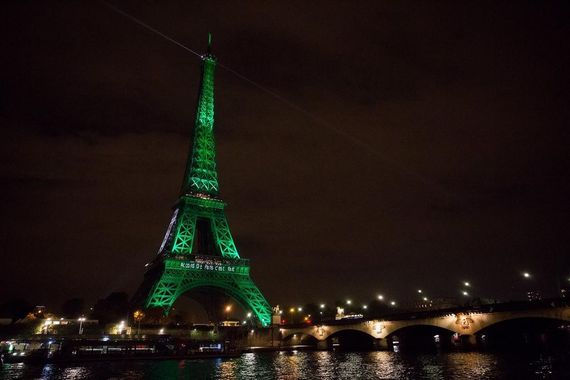New paper questions Paris Agreement's dubious temperature limits
Posted on: Friday, December 15, 2017 CommentsThe Paris Agreement adopted in December 2015 during the COP21 climate conference stipulates that the increase in the global average temperature is to be kept well below 2°C above "pre-industrial levels" and that efforts are pursued to limit the temperature increase to 1.5°C above "pre-industrial levels."
However, a closer inspection of the treaty text, reveals that the term "pre-industrial levels" is nowhere defined in this epochal UN-document that has meanwhile been ratified by 170 Parties.

This is especially odd because the "pre-industrial" temperatures of the past 10,000 years have varied quite significantly, as meticulously documented by hundreds of paleoclimate studies.
Puzzled by this apparent gap in the Agreement, Fritz Vahrenholt went out and researched the history of the temperature limit definition.
The former renewable energy manager and current head of the German Wildlife Foundation were surprised to find that the initial description of this important climate goal dates back to the mid-1970s, proposed by an economist, by the name of William Nordhaus.
Nordhaus’ idea was as simple as effective: He looked at the maximum temperatures recorded during the past several hundred thousand years and warned that this natural range should not be exceeded in the future.
Two decades later, in 1995, the German Advisory Council for Global Change further refined this concept, but kept Nordhaus’ original idea of a tolerable "temperature window".
Vahrenholt: "Unfortunately this important palaeoclimatological perspective was lost in subsequent key papers on the subject that paved the way to the Paris Agreement.
Reports by the World Bank and United Nations Framework Convention on Climate Change (UNFCCC) in 2014 and 2015 narrowed their view to the last 200 years which does not do justice to the enormous natural temperature fluctuations on a multi-millennial perspective."
In order to better understand the complex pre-industrial temperature history of the past, Vahrenholt teamed up with Sebastian Lüning, a professional resources geologist who in his spare time works on paleo-climatological studies with the Switzerland-based Institute for Hydrography, Geoecology and Climate Sciences.
Lüning researched the literature and integrated the Paris Agreement 2.0°C and 1.5°C temperature limits into the climate development of the past 2000, 10,000 and 120,000 years.
Lüning: "Comparing the modern warming to reference levels at the end of the Little Ice Age about 150 years ago does not really make much sense because this period represents one of the coldest times of the past 10,000 years. The choice of a baseline near the lower extreme of a variable parameter is uncommon in science.
The temperature level that was reached during the interval 1940-1970 may serve as a better reference level because it appears to roughly correspond to the average pre-industrial temperature of the past two millennia."
On an even longer time scale, it is found that current temperatures have not yet even exceeded the warmest temperatures of a natural warm phase that globally occurred some 7000 years ago, the so-called 'Holocene Thermal Maximum'.
Read more at the GWPF
Source: GWPF
Add Comment
If you already have an account, please LOGIN.
If not, you may consider creating on. It’s FREE!
» Login
» Sign up